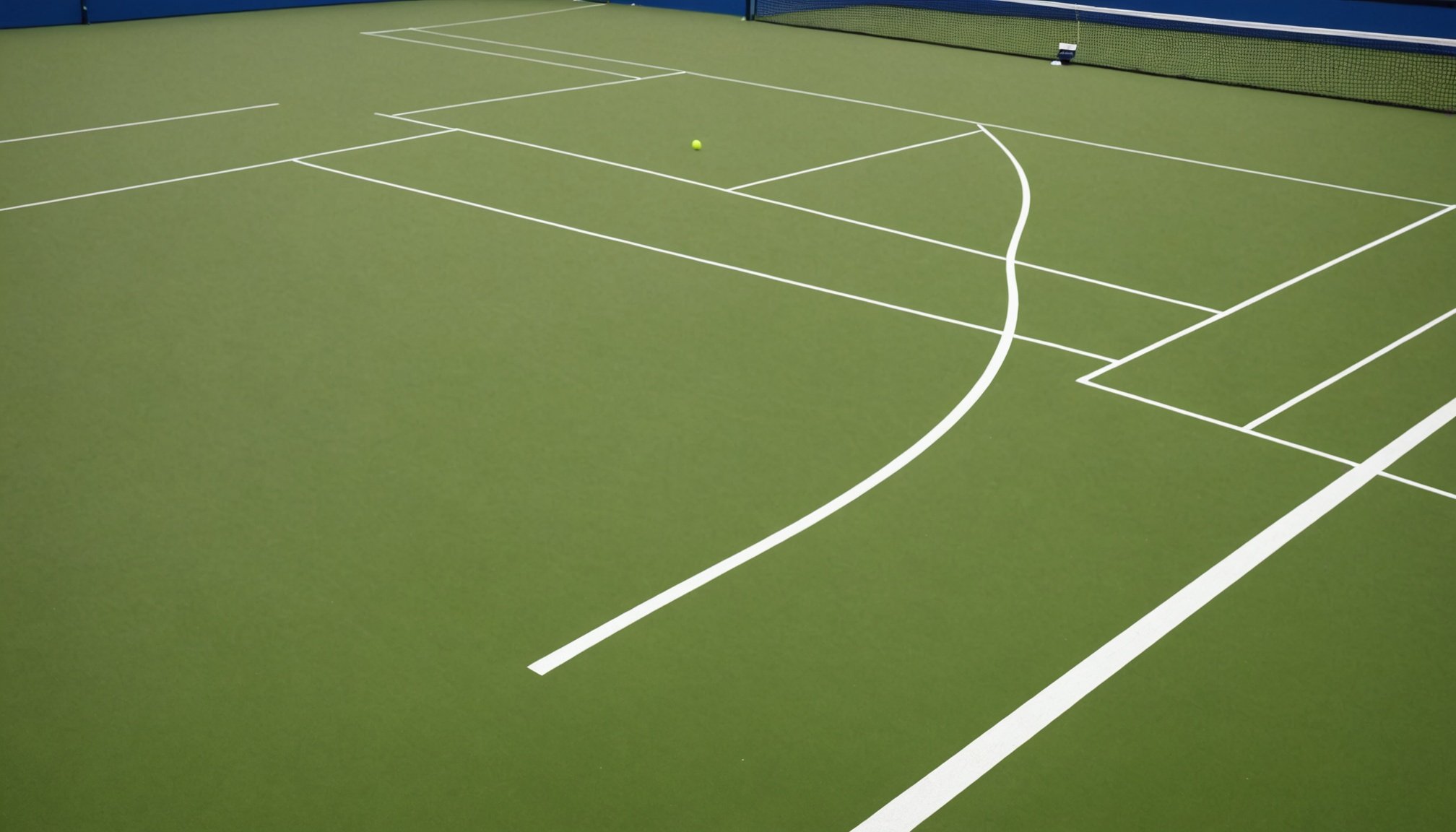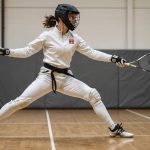Importance of Revamping Tennis Courts for Injury Prevention
The safety and health of tennis players heavily depend on the quality of the courts they play on. Common injuries such as sprains, strains, and joint issues often stem from poor court conditions. Rugged, worn-out surfaces contribute to unstable footing, increasing the risk of dangerous slips or falls during play.
Revamping tennis courts is essential for injury prevention. Well-maintained courts with even, smooth surfaces offer better traction. This reduces avoidable accidents and enhances player safety by providing a consistent bounce and predictable playing conditions. For instance, cracks and debris can lead to unexpected ball movements, causing players to make sudden, risky motions that may result in injury.
Additional reading : Boosting Performance: A Comprehensive Guide to Mental Health Strategies for UK Track and Field Coaches
The benefits of proactive court renovation extend beyond just safety. Regularly updating and revamping tennis courts ensures not only fewer injuries but also better player performance. Smooth, even surfaces aid in swift movement and cleaner shots, enhancing the overall game experience. On top of that, players can engage with the sport more confidently, knowing they are playing in a safe environment.
In conclusion, investing in the regular maintenance and renovation of tennis courts is a logical and effective approach to safeguarding players while improving their game dynamics. Prioritising these practices is paramount for the health and enjoyment of players.
In parallel : Attracting Families to UK Sports Venues: Innovative Strategies for a More Family-Friendly Experience
Key Safety Measures in Court Design
When designing a sports court, court design safety is paramount to ensure both player protection and facility longevity. Let’s delve into the essential measures that must be implemented.
Understanding the importance of court layout
The court layout plays a crucial role in player safety. A well-thought-out design enhances movement efficiency and reduces risk of injuries. For example, ensuring that playing surfaces are level and free from obstacles is critical. Precise measurements should follow standardized design guidelines to create a safe environment. Furthermore, clear zones around courts and appropriately marked boundaries help prevent collisions and other accidents.
Implementing proper drainage systems
Adequate drainage systems are essential to prevent water accumulation, which can lead to slippery surfaces and potential injuries. Implementing proper drainage includes using permeable materials that allow water to seep through the surface or designing slopes that direct water away effectively. These systems not only ensure player safety but also prolong the life of the court by preventing water damage and deterioration.
Establishing appropriate fencing and lighting
Fencing is integral to court design safety, providing protection from potential external hazards. It prevents stray balls from causing injuries or accidents outside the court area. Appropriate lighting is equally important, enabling safe play during low-light conditions and ensuring that visibility remains optimal to avoid mishaps. Lighting should be uniform and free from glare to maintain comfortable play conditions.
Choosing the Right Surface Materials
When it comes to tennis court surfaces, choosing the correct material significantly impacts both performance and safety. Different surfaces, such as clay, grass, and hard, each offer distinct characteristics and benefits. Let’s dive into these options and explore how they affect play and player safety.
To begin with, hard courts, typically made from asphalt or concrete, are known for their durability and consistent bounce. While they require less maintenance, they can contribute to higher injury risk due to their rigidity. Choosing a hard court with a shock-absorbing layer can mitigate some of this risk by reducing strain on joints.
Clay courts, on the other hand, are renowned for being slow and providing longer rallies. These surfaces are unique in that they offer natural shock absorption and injury risk reduction, making them a popular choice for preventing muscle strains. However, clay courts do require regular maintenance to preserve their condition.
Grass courts offer a fast-paced game with a softer surface that eases the pressure on players’ joints. Despite these advantages, grass courts can be expensive to maintain due to the need for consistent mowing, watering, and repair.
Each surface requires different considerations for maintenance and longevity, making it crucial to assess your specific needs and resources before deciding.
Regular Maintenance Practices
Consistent court maintenance is crucial for prolonging the lifespan and performance of sports surfaces. This involves structured upkeep practices that should become part of a routine schedule.
Scheduling Routine Inspections
Frequent inspections help in identifying issues before they escalate. Look out for surface wear, cracks, and any signs of moisture retention that can weaken the court. By sticking to a regular inspection schedule, maintenance can be performed proactively, which supports keeping the court in top shape.
Importance of Surface Cleaning and Repairs
To maintain a safe and playing-friendly surface, regular cleaning is essential. Accumulated dirt and debris can cause the surface to become slippery, posing risks to players. Addressing small repairs early, such as filling in cracks or repairing chipped areas, prevents minor problems from turning into major, costly renovations.
Seasonal Maintenance Tips for Optimal Conditions
Each season introduces different challenges for court upkeep. During autumn, focus on clearing fallen leaves and preparing the court for winter. In winter, it’s important to ensure proper drainage to prevent ice buildup, while in spring, inspect the surface for any winter damage. Summer calls for shading and hydration of the court under intense sun. Implementing these upkeep practices each season ensures the court remains in excellent condition year-round, reducing the need for frequent renovation.
Injury Prevention Tips for Players
In sports, injury prevention plays a crucial role in maintaining athletes’ well-being and performance. Incorporating effective training practices is key. To reduce injuries, it’s essential for players to engage in thorough warm-up and cool-down sessions. A proper warm-up gradually prepares the body, enhancing flexibility and performance. Cooling down, conversely, assists in recovery by slowly returning the heart rate to normal and reducing muscle soreness.
Another critical component of preventing injuries is player education on court conditions. Recognising factors such as the type of surface, cleanliness, and temperature can alert players to potential hazards. Educating athletes on these environmental aspects empowers them to take proactive steps, like adjusting playing intensity, to mitigate risks.
Moreover, the importance of wearing appropriate footwear cannot be overstated. Proper shoes provide essential support, cushioning, and traction, directly contributing to injury reduction. Selecting the right pair should consider the specific sport, playing surface, and individual player needs. As these factors differ, players must consult with trainers or specialists to determine the best options tailored to their activities.
By focusing on these integral elements of injury prevention, athletes can foster healthier and longer-lasting sporting careers.
Compliance with UK Regulations
Adhering to UK regulations requires understanding the complexities of diverse compliance standards and safety guidelines. Businesses, especially those in health and safety sectors, must grasp relevant legislation to ensure smooth operations.
Understanding Relevant Health and Safety Legislation
In the UK, health and safety legislation is governed by comprehensive acts like the Health and Safety at Work Act 1974. It mandates employers to ensure a safe work environment for employees and the public. Compliance requires businesses to conduct risk assessments, maintain safety equipment, and train employees on safety practices. Failure to align with these standards can result in penalties and legal issues.
Best Practices for Ensuring Club Compliance
Clubs must establish robust compliance strategies to meet safety guidelines. Regular safety audits, thorough documentation of safety procedures, and training sessions are effective practices. Implementing a compliance management system helps track adherence to standards, facilitating swift adaptations to new regulations.
Resources for Staying Updated on Regulations
Staying informed about changing regulations is crucial. Resources like the Health and Safety Executive (HSE) website provide the latest updates on UK regulations. Joining industry organisations or subscribing to compliance newsletters can also offer insights into evolving standards. These resources ensure that clubs and other establishments maintain a high level of regulatory compliance.
Case Studies of Successful Court Revamps
Revamping sports courts is a growing trend among UK clubs. By examining case studies of successful renovations, clubs can gain valuable insights into the benefits and opportunities available. Numerous clubs have undertaken significant upgrades, transforming their facilities not just to improve aesthetics but to enhance performance and user experience.
One club’s renovation success story exemplifies how targeted improvements can increase member satisfaction. By installing premium surfaces and advanced lighting, the club noticed a substantial rise in court bookings. Members reported enjoying a smoother playing surface and improved visibility during evening sessions.
Another practical example comes from a club that introduced smart booking systems with its court renovation. This technological upgrade streamlined bookings and offered members greater flexibility, thus increasing overall usage and attracting new members.
From these examples, it is clear that successful court revamps often hinge on understanding member needs and prioritizing upgrades that significantly enhance user satisfaction. For clubs considering similar projects, it’s crucial to evaluate the specific requirements of their user base and to plan renovations that align with broader club goals. Lessons learned include prioritizing meaningful enhancements, effectively managing budgets, and ensuring that any technological integration is user-friendly and reliable.
Cost Considerations for Court Renovation
When planning for court renovation, understanding and estimating the renovation costs is crucial. Different types of renovations, such as resurfacing, lighting upgrades, or adding seating, require distinct budget considerations. For example, resurfacing might cost less than upgrading lighting systems, yet both improve facility usability.
Budgeting effectively involves accounting for materials, labour, and unforeseen expenses. It’s advisable to include a contingency fund in your budget to handle unexpected surprises without straining your finances. A clear financial plan helps keep the project on track and within budget.
Exploring funding options can alleviate financial burdens. Clubs might consider applying for grants, which are often available from sports organizations or local governments. These funding options can significantly defray costs, making essential upgrades feasible even on limited budgets.
In addition to the immediate costs, it’s essential to consider the long-term financial benefits of renovations. Improvements can lead to reduced injuries, which saves on potential medical costs and liability claims. Moreover, modern materials and technologies may lower future maintenance costs, ensuring that the court remains in excellent condition for years. This foresight emphasizes the financial benefits of strategic investment in facilities, making renovations worthwhile in the long run.





